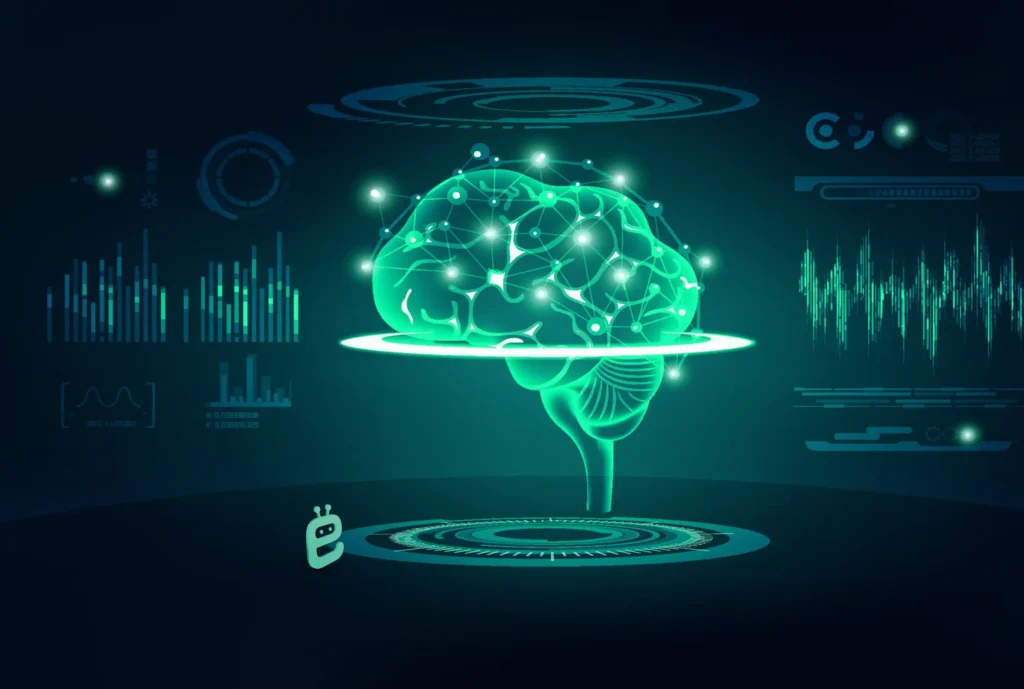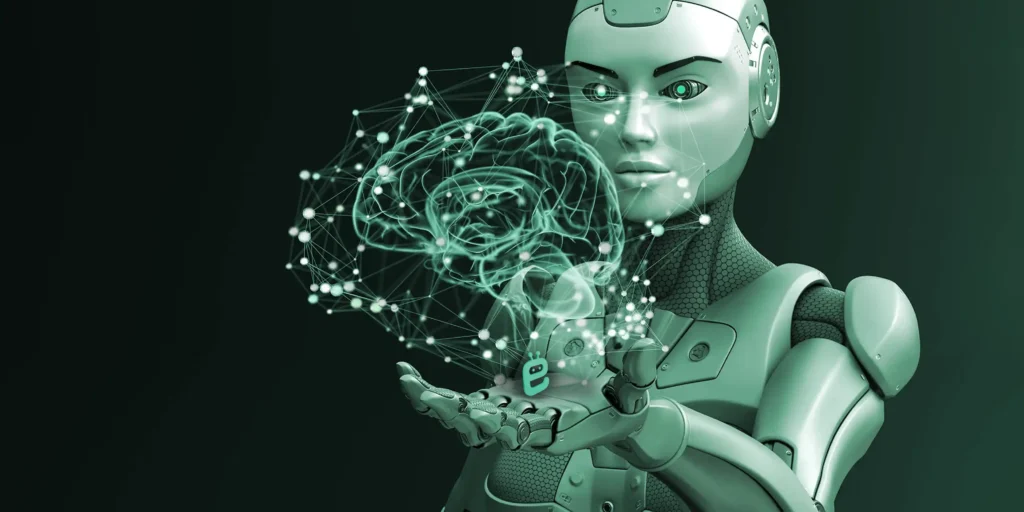The use of AI in neurotechnology has proven to be helpful in mind studies. Through state-of-the-art algorithms and system-studying strategies, AI-powered systems can examine sizeable amounts of statistics amassed from mind imaging technologies, which include EEG or fMRI scans. This permits researchers to pick out styles, come across abnormalities, and find hidden connections in the brain’s elaborate community.
Introduction
In recent years, the sphere of neurotechnology has witnessed tremendous advancements with the integration of synthetic intelligence (AI). This powerful mixture has unfolded new opportunities and revolutionized our expertise in the human brain. By harnessing the talents of AI, researchers, and scientists can delve deeper into the complexities of neural networks and gain insights that were formerly inaccessible.
One key area in which AI has made substantial contributions is in interpreting neural alerts. By developing advanced algorithms, scientists can interpret those alerts with excellent accuracy, making an allowance for real-time monitoring and analysis. This leap-forward technology holds mammoth potential for packages inclusive of prosthetic control, neurorehabilitation, or even cognitive enhancement.
AI-driven neurotech is also paving the way for personalized medication and focused treatment plans. By leveraging gadget learning algorithms to research character brain hobby patterns, healthcare experts can tailor treatments mainly to a patient’s particular neurological profile. This precision medicine technique holds promise for more effective interventions in situations involving epilepsy, Parkinson’s disease, or intellectual health disorders.

As we continue to discover the intersection between AI and neurotechnology, it will become evident that this symbiotic relationship has tremendous implications for our knowledge of the human mind and its complexities. The integration of artificial intelligence no longer only complements our capability to decode neural processes but also opens up new avenues for healing interventions and personalized healthcare methods. With ongoing research improvements in this area, we can assume thrilling developments as a way to form the future panorama of neuroscience and enhance lives worldwide.
Enhancing Brain-Computer Interfaces with AI Algorithms
The field of brain-computer interfaces (BCIs) has seen tremendous advancements in recent years, and one key thing driving these advancements is the mixing of AI algorithms. By combining neural engineering with AI, researchers and engineers are capable of beautifying the competencies and overall performance of BCIs.
AI algorithms play a crucial role in improving the accuracy and reliability of BCIs by reading neural signals and extracting meaningful facts from them. These algorithms can decode mind-hobby patterns, become aware of specific intentions or instructions from customers, and translate them into actionable outputs.
AI algorithms enable BCIs to conform to and learn from people’s comments over the years. This adaptive capability allows for personalized personal stories, as the machine can continuously refine its overall performance based totally on individual preferences and desires.
In addition to enhancing BCI’s overall performance, AI algorithms also contribute to the development of more intuitive and herbal interactions among humans and machines. By leveraging system learning techniques, BCIs may be trained to recognize complex styles of mental pastimes related to different cognitive states or feelings. This opens up new possibilities for seamless communication between humans and technology.
The combination of AI algorithms in BCIs holds remarkable promise for advancing our know-how of the human mind, improving assistive technology for individuals with disabilities, and allowing new types of human-system interplay. As studies continue to progress in this location, we can assume similar breakthroughs will shape the future landscape of neural engineering with AI.
The Impact of AI on Neurotechnology Techniques and Analysis
AI has made big improvements in the subject of neuroimaging, revolutionizing the way we take a look at and analyze the mind. By leveraging device learning algorithms and strategies, AI has stronger neuroimaging practices, leading to more accurate and efficient analysis of mind imaging information.
One of the important applications of AI in neuroimaging is automated analysis. Traditionally, reading neuroimaging statistics has been a time-consuming and exertion-intensive assignment for researchers. However, with AI-powered gear and deep learning algorithms, it is now feasible to automate diverse steps within the analysis process. This includes responsibilities like image segmentation, function extraction, and the classification of brain structures or abnormalities.
Machine-learning algorithms can also help improve the accuracy of neuroimaging strategies. By educating myself on large datasets of categorized mind photos, AI models can research patterns and relationships that might not be easily identifiable by human specialists on their own. This permits researchers to detect diffused modifications or anomalies in brain scans that might potentially indicate neurological problems or situations.
AI-enhanced neuroimaging strategies have unfolded new avenues for studies and medical packages. For instance, practical magnetic resonance imaging (fMRI) blended with gadgets and gaining knowledge of algorithms can help predict cognitive states or perceive biomarkers related to certain mental fitness issues.
The combination of AI and neuroimaging has elevated the development of information about the complexities of the human brain. It no longer only streamlines analysis processes but also complements accuracy and offers valuable insights into neurological situations. As technology continues to advance, we can anticipate similar traits that will shape the destiny of neuroscience research and clinical exercise.
Improving Diagnosis and Treatment Through AI in Neurotechnology
The subject of Neurotechnology has seen giant advancements with the integration of artificial intelligence (AI) technologies. AI-based diagnostic equipment has emerged as effective equipment for enhancing the accuracy and performance of diagnosing neurological disorders.
These AI-based total diagnostic tools leverage device-studying algorithms to research extensive quantities of patient statistics, along with medical facts, imaging studies, and genetic records. By detecting patterns and anomalies within the information, this equipment can help neurologists make more accurate diagnoses.
AI has additionally paved the way for personalized remedies in Neurotechnology. With the assistance of AI algorithms, healthcare providers can examine the characteristics of a man or woman affected, including genetics, way of life factors, and remedy records, to develop tailored treatment plans. This personalized approach ensures that sufferers acquire focused interventions that are most likely to be effective for their precise circumstances.
By harnessing the energy of AI in Neurotechnology, healthcare experts can enhance patient care by improving diagnostic accuracy and offering customized treatment plans. These advancements hold remarkable promise for the destiny of Neurotechnology and feature the ability to revolutionize how neurological issues are identified and treated.
The Future of Neural Prosthetics and Rehabilitation with AI Integration
The destiny of neural prosthetics and rehabilitation holds amazing promise with the combination of synthetic intelligence (AI). Ambient intelligence for prosthetics is an emerging field that aims to enhance the functionality and usability of assistive gadgets by incorporating AI technology.
One of the key regions where AI integration can revolutionize neural prosthetics is rehabilitating neural characteristics. By leveraging superior system learning algorithms, AI can help examine and interpret neural alerts, permitting more unique manipulation over prosthetic limbs or other assistive gadgets. This opens up new opportunities for people with limb loss or paralysis to regain mobility and independence.
Neutrally manipulated structures powered by AI can enhance the efficiency and effectiveness of rehabilitation applications. These structures can adapt and customize therapy classes based totally on individual wishes, optimizing the recovery system for every affected person. By continuously monitoring progress and adjusting treatment plans in real-time, AI-driven rehabilitation programs can accelerate restoration and improve effects.
AI-powered analytics can offer valuable insights into affected-person facts amassed at some point in rehabilitation classes. By studying patterns and tendencies in these statistics, healthcare professionals can gain a deeper understanding of every patient’s development, pick out regions for improvement, and tailor remedy plans for this reason.
Integrating AI into the field of neural prosthetics and rehabilitation gives interesting opportunities to beautify functionality, personalize therapy periods, and improve consequences for individuals with Neurotechnology neurological situations or limb loss. As the era continues to enhance in this region, we can anticipate sizable advancements that will positively affect the lives of many humans around the world.
Ethical Considerations and Challenges in Adopting AI in Neurotechnology
As the field of neuroscience continues to grow, the combination of synthetic intelligence (AI) generation has become increasingly normal. However, this adoption raises important moral issues and demands situations that have to be cautiously addressed.
One of the number-one moral issues is ensuring the accountable use of AI in neuroscience in Neurotechnology research. This consists of problems that include statistics, privacy, and knowledgeable consent. As AI systems depend on huge amounts of information, it is crucial to safeguard the privacy and confidentiality of the people whose information is being used. Additionally, researchers should acquire informed consent from members, ensuring they understand how their data might be amassed, saved, and utilized.
Another moral concern is the potential for bias in AI algorithms used in neurotechnology. If not nicely designed and calibrated, those algorithms can perpetuate existing biases or create new ones. It is vital to address this trouble by imposing rigorous trying-out techniques and continuously tracking algorithm performance to mitigate any unintentional biases.
Transparency and duty are vital in the usage of AI in neurotechnology studies. Researchers must be transparent about their techniques, which include how AI structures are educated and confirmed. This transparency allows for scrutiny and ensures that any potential biases or mistakes may be diagnosed and rectified.
There are issues surrounding the impact of AI on employment within neuroscience in Neurotechnology research. As the AI era becomes more sophisticated in studying statistics and producing insights, there can be concerns about activity displacement for human researchers. It is important to take into account techniques for reskilling or upskilling researchers to conform to this changing panorama.
Addressing these moral issues requires collaboration between researchers, policymakers, ethicists, and different stakeholders in the field of neuroscience. By proactively addressing these demanding situations head-on while prioritizing ethics in adopting the AI era within neurotechnology studies, we can make certain accountable innovations that benefit society as a whole.
FAQS
The intersection between AI and Neurotechnology involves the integration of artificial intelligence techniques with advancements in neuroscience. This synergy aims to enhance our understanding of the brain and develop innovative applications for medical, research, and technological purposes.
AI contributes to Neurotechnology by enabling advanced data analysis, pattern recognition, and machine learning algorithms. These tools help process large sets of neuroscientific data, leading to deeper insights into brain functions, disorders, and potential therapeutic interventions.
AI is used in neuroimaging analysis to enhance the interpretation of complex brain scans. Machine learning algorithms can identify patterns, anomalies, and biomarkers in imaging data, aiding in the diagnosis of neurological disorders and providing insights into brain structure and function.
Conclusion
The combination of synthetic intelligence and neurotechnology holds vast promise for the future. By harnessing the electricity of AI, researchers and scientists can liberate new possibilities in information and enhance brain characteristics.
The potentialities of this integration are substantial. Artificial intelligence can be a useful resource in analyzing complicated mental facts, along with Neurotechnology scans, to discover styles and correlations that may have previously been omitted. This can lead to advancements in diagnosing and treating Neurotechnology problems.
The combination of artificial intelligence and neurotechnology gives us an extensive range of possibilities for advancing our expertise in the brain and improving human fitness. With persistent studies and development in this subject, we will look forward to a future in which AI-driven improvements rework how we diagnose, deal with, and interact with Neurotechnology situations.
